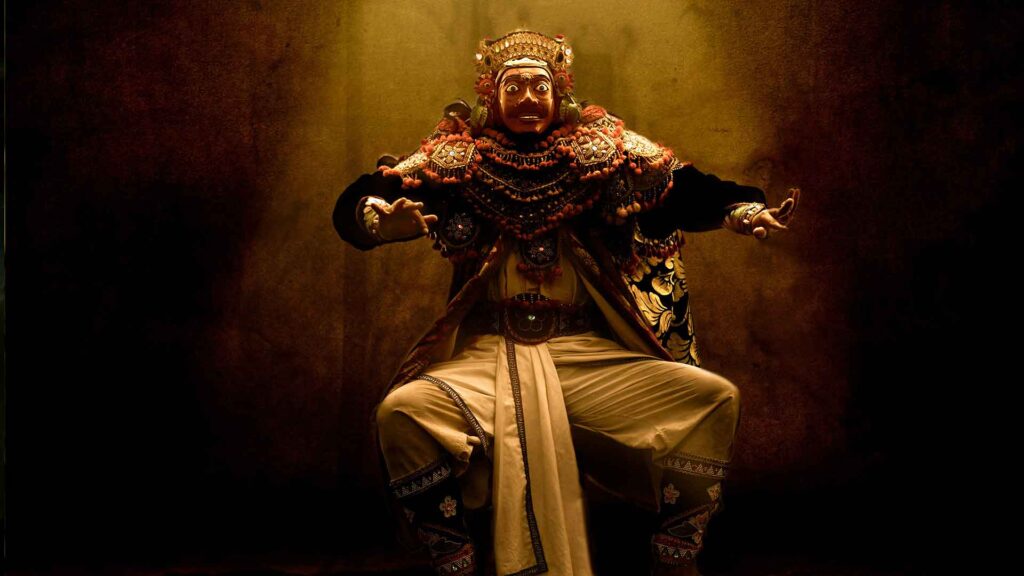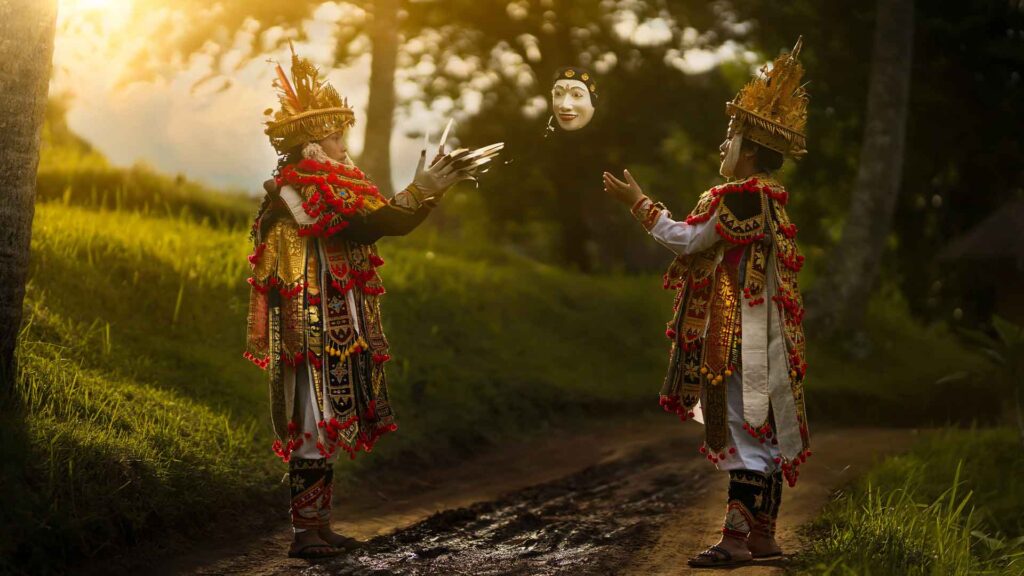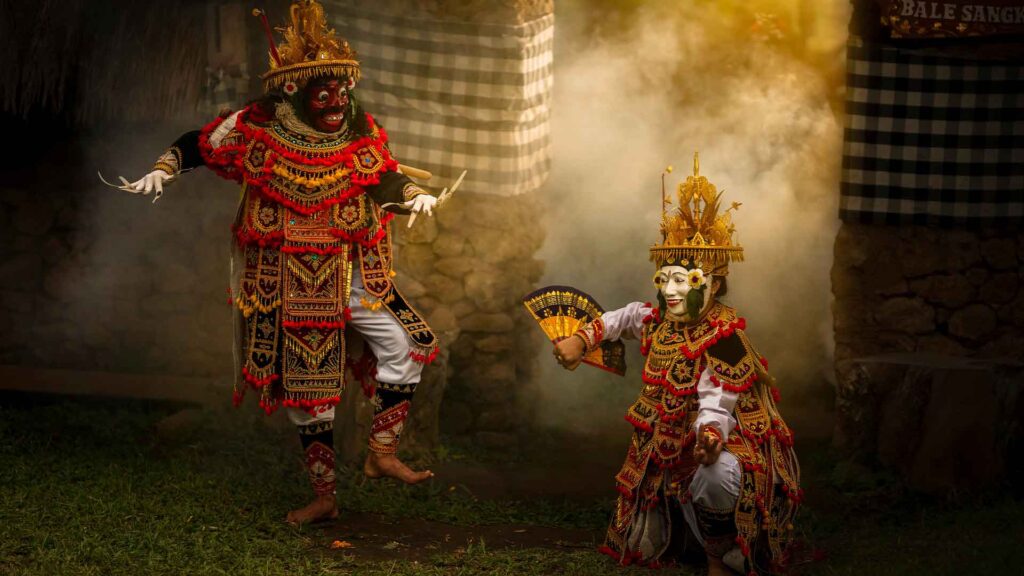- We are open every : MON - SUN : 6:00AM - 7:00 PM
- balidriverandtour12@gmail.com

The Balinese mask dance (Topeng Bali) is one of the most iconic and spiritually significant art forms in Balinese culture. More than just entertainment, these performances blend storytelling, ritual, and aesthetics in a way that connects the seen and unseen worlds. Often performed during temple ceremonies or cultural showcases, the mask dance is a living representation of Bali’s ancestral heritage.
Balinese mask dance (tari topeng) is a traditional performance art that uses hand-carved wooden masks to depict various characters from mythology, history, or folklore. Each mask reflects a specific personality—noble kings, wise priests, mischievous clowns, or supernatural beings.
Unlike regular dance, the mask limits facial expressions, so the dancers rely on body movements, eye contact, and rhythm to convey emotion and narrative. This makes the dance both mysterious and expressive at once.
Historically, these performances were used to honor ancestors, dramatize epics like the Mahabharata or Ramayana, or invoke spiritual protection for villages. Even today, mask dances are performed as sacred rituals in temple ceremonies (odalan) or community purification rites.
There are several distinct forms of Balinese mask dance, each with its own function and structure:
Topeng Pajegan
A one-man show where a single dancer plays multiple roles by switching masks mid-performance. This dance requires high skill and deep understanding of the characters.
Topeng Panca
A group performance with five dancers, representing a full court or storyline. Each dancer plays a specific role—king, warrior, advisor, fool, or antagonist.
Topeng Sidakarya
Considered a sacred dance, performed during religious rituals to purify the ceremony and ensure its success. The mask used is always white with unique features.
Barong and Rangda
Though slightly different, these involve masked characters representing good (Barong) and evil (Rangda) battling in a cosmic dance of balance.


In Bali, masks are not merely props—they are sacred objects believed to hold spiritual energy. Artisans who create these masks undergo rituals before carving and painting them, especially if the masks are destined for temple use.
Each mask reflects more than appearance:
Colors indicate character traits (e.g., red for anger, white for purity, gold for divinity).
Facial features show emotions (e.g., bulging eyes for rage, calm eyes for wisdom).
Hair and accessories are used to distinguish social roles or mythical origins.
Before performances, masks used in rituals are often blessed with offerings and prayers. Dancers also prepare themselves spiritually to “embody” the spirit of the character.
While sacred performances are often closed to tourists, there are many places where you can enjoy authentic mask dances:
Ubud Palace: Daily evening shows featuring traditional dances including topeng and barong.
Batubulan Village: Famous for Barong and Topeng performances in the morning.
Arma Museum and Setia Darma House of Masks & Puppets: Offer educational exhibitions and occasional shows.
Temple festivals: If you’re lucky, you might be invited to witness a mask dance during an odalan (temple anniversary) or community ritual.
As modern entertainment grows, many Balinese families continue to pass down mask dancing as part of their identity. Dance schools and art foundations in Bali teach both locals and interested foreigners about the meaning and techniques of topeng.
Artisan villages such as Mas and Peliatan are also centers for mask carving, where you can observe the creation process or even try making a small decorative mask yourself.
Dress modestly, especially if attending a temple-based performance.
Arrive early for public shows—seats fill up quickly.
Support the art by buying masks or tickets directly from local communities.
Don’t point your feet at the dancers during ceremonies—it’s considered disrespectful.
Hire a local guide or private tour driver to combine your visit with other cultural stops.
Watching a mask dance is one thing. Understanding it is another. To get the most out of the experience, many travelers choose to combine it with visits to nearby temples, artisan villages, or traditional homes. A private driver or tour guide can help tailor your day around these cultural gems—off the beaten path and deeply meaningful.
Bali Driver & Tour – 2024